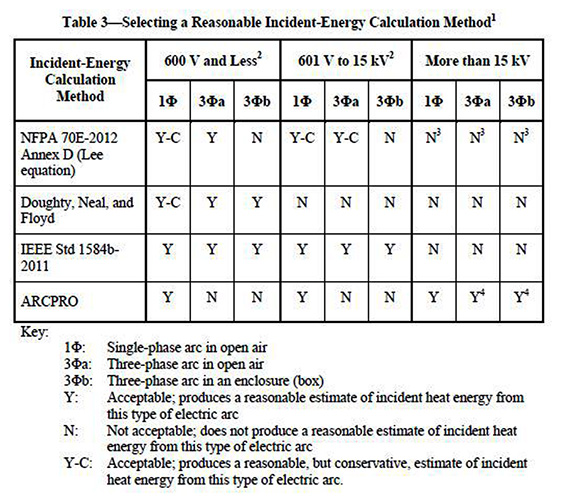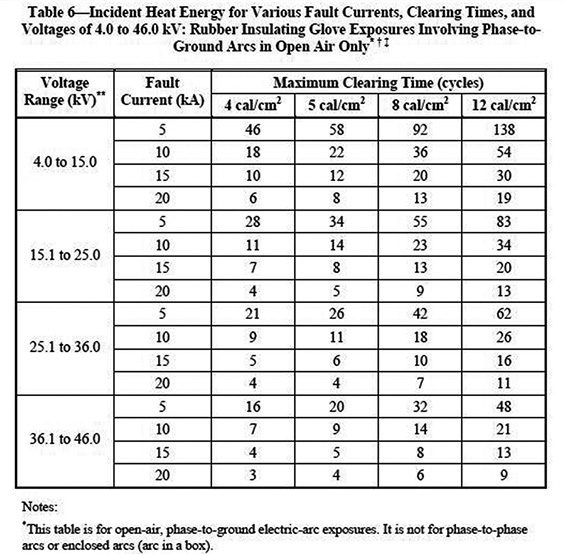An Overview
Occupational Safety and Health Administration’s (OSHA) recent revision of the standard for electric power generation and distribution and associated construction will improve workplace safety and health for workers involved in construction and maintenance of all facets of power distribution, including electric power generation, transmission and distribution. This new ruling is a much needed update, which will drive home the need for effective electrical safety work practices. The standard requires better fall protection for workers on poles and towers, personal protective equipment for workers against hazards of shock and arc flash and additional training to avoid electrical hazards for those that may work near power lines.
Risks associated with shock and electrocutions from inadvertent contact with energized parts have long been recognized as a threat to electrical workers. In 2005, OSHA began the rule-making process to update the outdated construction standards (1926 Supart V), which were last updated in 1972, and the general industry standards (1910.269), which were published in 1994. Through analysis and careful review, OSHA determined that existing regulations did not provide enough protection for employees working in situations that could cause serious injury and death.
The new rule, as with most recent OSHA regulations, is performance-based, and requires employers to perform hazard analysis, train, and protect their employees from the hazards that may be present.
Prior to the updated ruling, OSHA’s construction and general industry regulations were not harmonized – and were often contradictory. For example, regulations for fall protection, personal protective equipment for both electric shock and exposure to flames and electrical arc (arc flash), protective grounds and hazard analysis required review, due to contradictory guidelines.
OSHA estimates that these changes will save up to 20 lives and prevent over 100 serious and debilitating injuries per year, likely more. OSHA only investigates circumstances in which three or more employees become hospitalized in the same event. Considering there are hundreds more injuries per year that are not investigated by state or federal regulators, the updated standards will likely prevent more incidents than predicted.
Revisions to the Ruling
In all, OSHA is revising the following regulations in Code of Federal Regulations, Title 29.
- PART 1910
- Subpart I – Personal Protective Equipment
- Appendix B to Subpart I of Part 1910 – Nonmandatory Compliance Guidelines for Hazard Assessment and Personal Protective Equipment Selection
- Subpart R – Special Industries
- Subpart S – Electrical
- Subpart I – Personal Protective Equipment
- PART 1926
- Subpart A – General
- Subpart E – Personal Protective and Life Saving Equipment
- Subpart M – Fall Protection
- Subpart V – Electric Power Transmission and Distribution
- Subpart X – Stairways and Ladders
- Subpart C – Cranes and Derricks in Construction
The most significant changes are in Part 1910, Subpart R, and Part 1926 Subpart V. The other parts were revised mostly for clarification or in reference to changes in the aforementioned subparts. Both rulings affect workers in the electric power generation, transmission and distribution industries.
These revisions affect workers in industries involving electric power generation, transmission, and distribution. For example, electric utilities, as well as contractors hired by utilities, are affected. The most interested parties in the rules are in industries involving electric power generation, transmission, and distribution. If the business is involved in constructing, operating, maintaining, or repairing electric power generation, transmission, or distribution installations, then both of these parts will be applicable. For example electric utilities, as well as contractors hired by utilities (primarily classified in the construction industry) are affected. The good news is that OSHA tried to harmonize the two regulations for similar work (i.e. both replacing and upgrading a switch have the same steps even though one is considered maintenance which is regulated under 1910, and one is considered upgrade and is under 1926).
In addition, manufacturing and other industries that own or operate their own electric power generation, transmission, or distribution installations as a secondary part of their business operations will need to carefully review the regulations for applicability to their operations. The line-clearance tree-trimming operations were also included in the scope of the construction standard including requirements for training on hazards of electricity and being able to recognize and avoid energize parts.
However, this is not all encompassing and the regulations and federal register’s preamble should be consulted for additional information.
Electric Shock Protection PPE
1910.136, 1910.137 and 1926.97 standard were also updated to performance based as necessary for employee safety, conforming to the latest consensus standards, as were all the rules mention in this article. Since consensus standards are updated much more frequently than regulations, many of the specifics that are in these standards were not included in the regulation, in order to ensure flexibility in compliance.1910.136, 1910.137 apply to all general industries and 1926.97 to all construction, even though they were revised under the ‘power generation’ initiative. Therefore their revisions for electrical protection are applicable to all.
OSHA was concerned that its requirement for electrical footwear may cause the employees to use the footwear as a primary form of protection against electrical shock – which would not provide adequate protection. This lead to the revision of 1910.136 to indicate that the use of electrically protective footwear is limited, as noted in the federal register to:
“(1) when working in areas where there is a danger of foot injuries due to falling or rolling objects, or objects piercing the sole, or
(2) when the use of protective footwear will protect the affected employee from an electrical hazard, such as a static-discharge or electric-shock hazard, that remains after the employer takes other necessary protective measures.”
Class 00 and non-rubber insulating materials were recognized in 1910.137. Generally voltage-rated gloves can be used without leather protector for dexterity if they are used for next lower class (in case of 00 gloves for 250 volts or less) for which they are designed and there is no possibility of puncture with energized part or damage. However the gloves must be electrically tested before they are used again. Objections to this requirement were rejected by OSHA, primarily since the consensus standard also contains this provision.
Electrical Work Practices
As previously mentioned Subpart V (construction) was revised to match those of general industry regulations and the new regulations have similar heading and break down of the requirements throughout. Briefly, the new rule:
- Adopts a requirement that employers determine the degree of training by the risk to the employee
- A new paragraph added to require employers to train qualified employees to recognize electrical hazards and to control or avoid them.
- The existing requirement for employers to certify that they trained employees has been replaced with a requirement for employers to determine that employees demonstrated proficiency in the work practices involved. In addition, a new note added to clarify how training received in a previous job would satisfy the training requirements.
- A new paragraph added to require training for line-clearance tree trimmers.
- A new paragraph added to require host employers and contract employers to share information on safety-related matters.
- A new requirement added to ensure that employers provide the employee in charge with information that relates to the determination of existing characteristics and conditions which he can discuss with others during the job briefing.
- The existing requirement revised to require the employer to be able to demonstrate that it maintained ventilation long enough to ensure that a safe atmosphere exists before employees enter an enclosed space.
- The final rule revises, and requires the employer to establish, minimum approach distances that employees must maintain from exposed energized parts.
- OSHA revised the existing requirements to ensure that employees use electrical protective equipment whenever they can reach within the minimum approach distance of an energized part.
- OSHA revised the requirements on clothing in existing § 1910.269(l)(6)(ii) and (iii) to require the employer to protect employees from electric arcs. Existing paragraph (l)(6)(i) redesignated as new paragraph (l)(7), and the new protective clothing and other protective equipment requirements added as paragraph (l)(8).
- The existing provision revised to require independent crews to coordinate energizing and deenergizing lines and equipment. A new paragraph has been added requiring multiple crews to coordinate their activities under a single employee in charge and to act as a single crew.
- The existing requirement revised to allow, under certain conditions, insulating equipment, other than a live-line tool, to place grounds on, or remove them from, circuits of 600 volts or less.
- OSHA added appendix E containing information on protecting employees from electric arcs.
- OSHA added a new appendix containing guidelines for the inspection of work-positioning equipment.
Below, we will discuss some of the more impactful revisions. These are host-contractor relationship, fall protection, approach boundaries, grounding at less than 600 volts and arc flash protection.
Host/Contractor Relationship
The owner/operator is required to notify contractors, even if they are not directly hired by the owner, as to the specifics regarding construction, operation, and hazards of the system on which the contractors will be working. The contractor is also required to divulge any hazards that he may bring on site or may create while working. Owner/operators are required to give a job briefing prior to each shift; one person must be identified as the ‘leader’ of all activities performed by each person on site, regardless of their employer.
Fall Protection
A personal fall arrest system (fall protection) is required if the employee is working at higher than 4 feet. Starting April 1, 2015, the standards require ‘qualified employees climbing or changing location on poles, towers, or similar structures to use fall protection, unless the employer can demonstrate that climbing or changing location with fall protection is infeasible or would create a greater hazard than climbing or changing location without it. According to the standard, a personal fall arrest system may be work-positioning equipment, a fall restrain system or other fall protection meeting Subpart D of OSHA’s general industry standards or Subpart M of OSHA’s construction standards, as applicable.’
Minimum Approach Distances
Approach boundaries or minimum approach distance analysis is required using either formulas or tables in the standard. The system voltage, maximum transient overvoltage (from engineering study or table in Appendix B), and altitude must be known. Appendix B of 1910.269 has the work practices on working on energized parts and paragraph ‘III. Determination of Minimum Approach Distances for AC Voltages Greater Than 300 Volts’ has the detailed guidance in this regard. OSHA offers (https://www.osha.gov/dsg/power_generation/index.html) an easy to use calculator for determining phase-to-phase and phase-to-ground minimum approach distance.
Grounding
Application of grounds to the de-energized parts over 600 volts will continue to require live line tools. However, the standard allows application of ground to equipment that operates at 600 volts or less without live line tools under certain conditions. First, the employer must be able to show that the equipment remains de-energized during the installation of grounds. Secondly, the application of grounds must be carried out with proper shock and arc flash protection. One way employers can prove that the equipment remains de-energized is to ensure the lockout tag out steps are completed and maintain the connection between the test equipment and the part being grounded throughout the grounding process. This will verify absence of voltage while the employee is installing grounds without live line tools on equipment operating at less than 600 volts.
Arc Flash Hazard Determination and Protective Clothing
The new requirements mandate that arc flash protection, which OSHA refers to as protection from ‘flames and electric arc,’ be in place by April 1, 2015. The standard requires hazard analysis and engineering studies to determine the level of hazard and clothing required to protect the employee from burns.
In 1994, OSHA recognized that flames and arcs were a hazard that could cause serious injury and death to employees. However, it did not have enough information regarding protection methods, in order to require personal protective equipment. Instead, OSHA decided to limit harm to employees from meltable and flammable clothing; thus prohibited these materials from being worn when working on or near energized parts. Over the past two decades, several new methods of quantifying potential hazards have been discovered. Additionally, flame and arc resistant clothing have become more pervasive in the market.
During the evaluation period, OSHA analyzed several calculation methods, at various voltages, current, clearing time and working distance. OSHA created a table highlighting where each of these calculation methods are most accurate. Now, OSHA provides tables of incident energy based on voltage, current and clearing time of the protective device and determined the incident energy at a working distance of 15 inches, as displayed in the tables below.
Table 3 from 1910.269 Appendix E


For reference, the calculations are for ‘arc in the open,’ which would be appropriate if the arc is located in an overhead line, where the energy and flames can go in all directions and mostly away from the employee. However, for arc inside tunnels and vaults, on front or under the distribution equipment, which is considered ‘arc in a box,’ the tables are no longer accurate. The incident energy as it appears in Table 6 is under-estimated by greater than 2.5 times. For example, to protect from 12 cal/cm2 flashes one could wear commercially available flame resistant head/face/hand protection and shirt and pants with a rating of 12 cal/cm2. However, an arc in a box would be 30 cal/cm2 or more which would require switching hood and what is commonly known as a switching suit, rated at 40 cal/cm2
The standard does not require protective clothing when the incident energy is less than 2 cal/cm2, its reason being that untreated natural fiber will protect some level of protection down to 1.2 cal/cm2 which is the threshold for second degree burn. Other standards do not agree and use 1.2 cal/cm2 as a minimum, above which protective clothing is required. It is believed that the future consensus standards will require protective clothing of 8 cal/cm2 whenever the exposure to energized parts of greater 50 volts is possible.
Conclusion
The final rule becomes effective on July 10, 2014. The compliance deadline for some provisions on fall protection, minimum approach distances, and arc-flash protection is April 1, 2015. This ruling will improve workplace safety and health for workers that are involved in construction and maintenance of all facets of power distribution as well as those in general industry with similar operations. Many thanks to OSHA for continuing to champion measures to better protect the men and women who work on or near electrical power lines. There is much more to do, but this ruling should put the industry on a path to safer working conditions.
About the Author
 Allen Hajian, CSP CHMM is the director of safety and environment for the Schneider Electric Services organization for North America, across all of Schneider Electric’s business units. He and his team manage all aspects of safety and environment for the Services organization, which is about 5,000 employees strong. Hajian is a graduate of the University of Florida and has over 25 years of experience.
Allen Hajian, CSP CHMM is the director of safety and environment for the Schneider Electric Services organization for North America, across all of Schneider Electric’s business units. He and his team manage all aspects of safety and environment for the Services organization, which is about 5,000 employees strong. Hajian is a graduate of the University of Florida and has over 25 years of experience.







